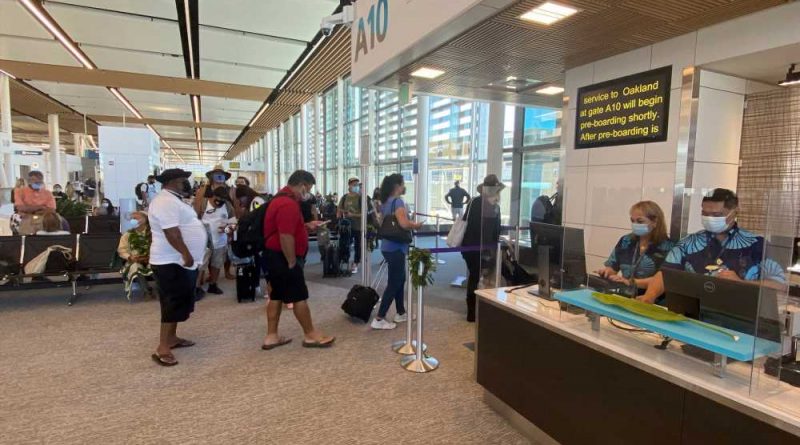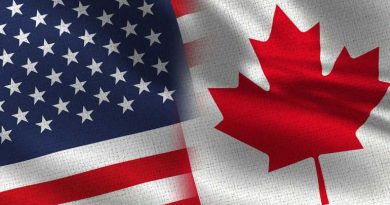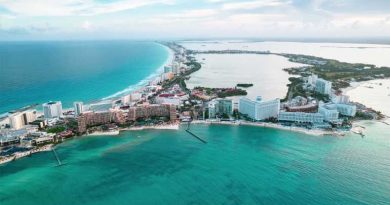Honolulu airport's new concourse expected to ease congestion
The opening of the $270 million Mauka Concourse at Honolulu’s Daniel K. Inouye International Airport on Aug. 27 marks the airport’s first gate expansion in 28 years.
The concourse is expected to improve efficiency and wait times at the Aloha State’s busiest airport.
The new 230,000 square-foot concourse in Honolulu expands Terminal 1 and can accommodate six widebody or 11 narrowbody gates.
The project is the first major gate expansion since Terminal 1 opened in July 1993.
“It’s been almost three decades since we built something of this type of magnitude,” said Hawaii Department of Transportation Airports Division deputy director Ross Higashi. “This will go down in Hawaii airport history.”
The new concourse will help alleviate a midday gate crunch at the airport from 10 a.m. to 3 p.m., peak times for the facility, and is expected to shorten the current 12- to 15- minute average wait in TSA lines. The terminal now has the capacity for up to ten security checkpoint lanes, up from seven previously.
During the busiest periods of the day it is not uncommon for departing passengers to have to cue for ticket counters on the sidewalks outside the airport building, something that has a “psychological impact” on travelers, Higashi said.
“That gave passengers the impression they were late or something was wrong,” Higashi said. “Now people will be able to line up inside the terminal and it will be a better experience for everyone.”
The new concourse will be used by Hawaiian Airlines, which operates approximately 50% of the flights out of Honolulu Airport, Higashi said.
“There are high ceilings, a lot of seating capacity, glass that allows natural light into the terminal from all four sides,” he said. “And the beauty of it is that the aircraft can park on three sides of the concourse, three sides of the square, and it makes it very efficient.”
Prior to the Covid-19 pandemic, an average of 20 million passengers annually board and exit planes in Honolulu, constituting roughly 57% of the 37 million passengers that move through the state’s 15 airports.
Because of pandemic disruptions, the food and beverage options and retail services in the new Mauka Concourse are not as far along as expected, Higashi said.
“Businesses are hurting, and you really can’t read the future right now with this new delta variant,” he said. “We will be building out the food and retail spaces in the concourse, but there’s been a little hiccup as everybody has been hit financially by the pandemic.”
The Department of Transportation is aiming for a minimum of Silver certification from the U.S. Green Building Council’s Leadership in Energy and Environmental Design (LEED) program with a concourse design that incorporated several elements to improve energy conservation and sustainability.
There are features to reduce water use, improve air conditioning efficiency, and allow natural light while blocking excessive solar heat.
The opening of the Mauka Concourse comes toward the end of a $2.6 billion dollar effort to update the state’s airports that began in 2015. A few projects are still pending.
In December, the new $360 million Honolulu Consolidated Rental Car Facility is expected to open. The 370,000-square-foot facility will bring all of the rental car offices under one roof, streamlining shuttle operations. It will have 4,500 spaces for rental cars, opening up airport space for more public parking.
“The beauty of this project is that it will reduce the amount of traffic around the airport and create a one-stop shop for customers who need a rental car,” Higashi said.
Also forthcoming is a new U.S. Customs and Border Protection inspection station at the Island of Hawaii’s Ellison Onizuka Kona International Airport.
After the 2008 recession, the airport stopped taking international flights, Higashi said, but as travel returned following the economic downturn, the state decided it wanted the ability to accept flights from outside the U.S. again. In 2016, state officials worked with the federal government to open a temporary inspection station at the Kona airport.
The new $58 million permanent customs facility is scheduled to open in October, Higashi said.
Farther down the road with an expected completion in 2024, Maui’s Kahului Airport will get a new hold room, expanding space for passengers waiting for their flights. More immediately, the airport is adding screening lanes and additional TSA staff, including dog teams, with a more permanent upgrade to the security checkpoint capacity coming in the future.
Kahului is the state’s second-busiest airport, and Higashi said wait times for clearing security are among the top five slowest out of all U.S. airports.
While a surge in Covid-19 cases on the islands attributed to the delta variant has led Gov. David Ige and state officials to discourage tourism to Hawaii at this time, Higashi expects all of the upgrades at the state’s airports to be put to good use soon.
“We’ve been through turbulent times before,” Higashi said. “There was the downturn after 9/11. There was the downturn after the 2008 recession. There was SARS, and now it’s the delta variant with this pandemic. What’s proven for Hawaii is we are a destination of choice, and people will continue to want to come here.”
Source: Read Full Article



